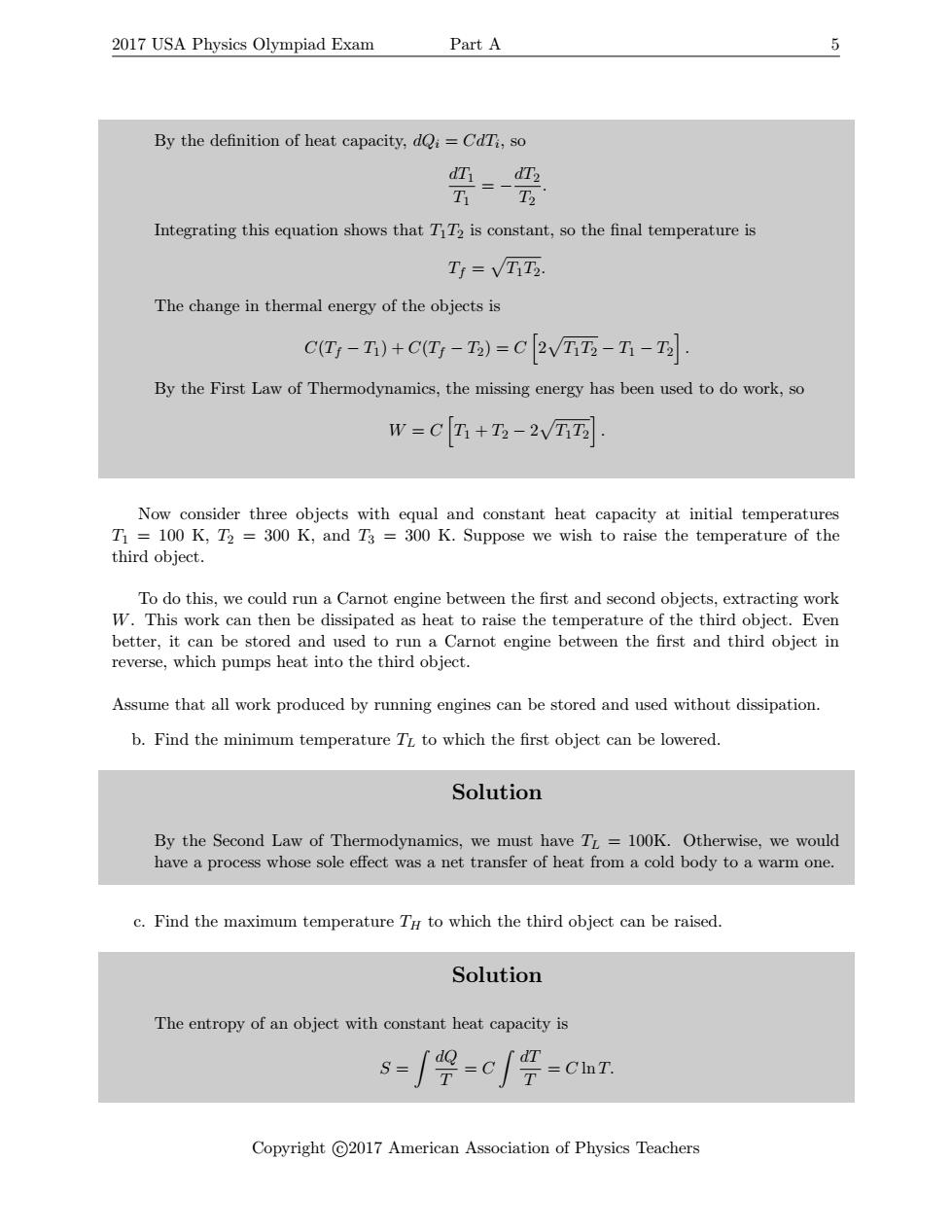正在加载图片...

2017 USA Physics Olympiad Exam Part A 5 By the definition of heat capacity,dQi=CdTi,so dT T Integrating this equation shows that TT is constant,so the final temperature is Ti=VTT2 The change in thermal energy of the objects is C(G-I)+C(4-)=C[2V西-T- By the First Law of Thermodynamics,the missing energy has been used to do work,so W=C[口+五-2V西 Now consider three objects with equal and constant heat capacity at initial temperatures T1 100 K,T2=300 K,and T3 300 K.Suppose we wish to raise the temperature of the third object. To do this,we could run a Carnot engine between the first and second objects,extracting work W.This work can then be dissipated as heat to raise the temperature of the third object.Even better,it can be stored and used to run a Carnot engine between the first and third object in reverse,which pumps heat into the third object. Assume that all work produced by running engines can be stored and used without dissipation b.Find the minimum temperature TL to which the first object can be lowered. Solution By the Second Law of Thermodynamics,we must have TL=100K.Otherwise,we would have a process whose sole effect was a net transfer of heat from a cold body to a warm one. c.Find the maximum temperature TH to which the third object can be raised. Solution The entropy of an object with constant heat capacity is dl =CInT. Copyright C2017 American Association of Physics Teachers2017 USA Physics Olympiad Exam Part A 5 By the definition of heat capacity, dQi = CdTi , so dT1 T1 = − dT2 T2 . Integrating this equation shows that T1T2 is constant, so the final temperature is Tf = p T1T2. The change in thermal energy of the objects is C(Tf − T1) + C(Tf − T2) = C h 2 p T1T2 − T1 − T2 i . By the First Law of Thermodynamics, the missing energy has been used to do work, so W = C h T1 + T2 − 2 p T1T2 i . Now consider three objects with equal and constant heat capacity at initial temperatures T1 = 100 K, T2 = 300 K, and T3 = 300 K. Suppose we wish to raise the temperature of the third object. To do this, we could run a Carnot engine between the first and second objects, extracting work W. This work can then be dissipated as heat to raise the temperature of the third object. Even better, it can be stored and used to run a Carnot engine between the first and third object in reverse, which pumps heat into the third object. Assume that all work produced by running engines can be stored and used without dissipation. b. Find the minimum temperature TL to which the first object can be lowered. Solution By the Second Law of Thermodynamics, we must have TL = 100K. Otherwise, we would have a process whose sole effect was a net transfer of heat from a cold body to a warm one. c. Find the maximum temperature TH to which the third object can be raised. Solution The entropy of an object with constant heat capacity is S = Z dQ T = C Z dT T = C ln T. Copyright c 2017 American Association of Physics Teachers